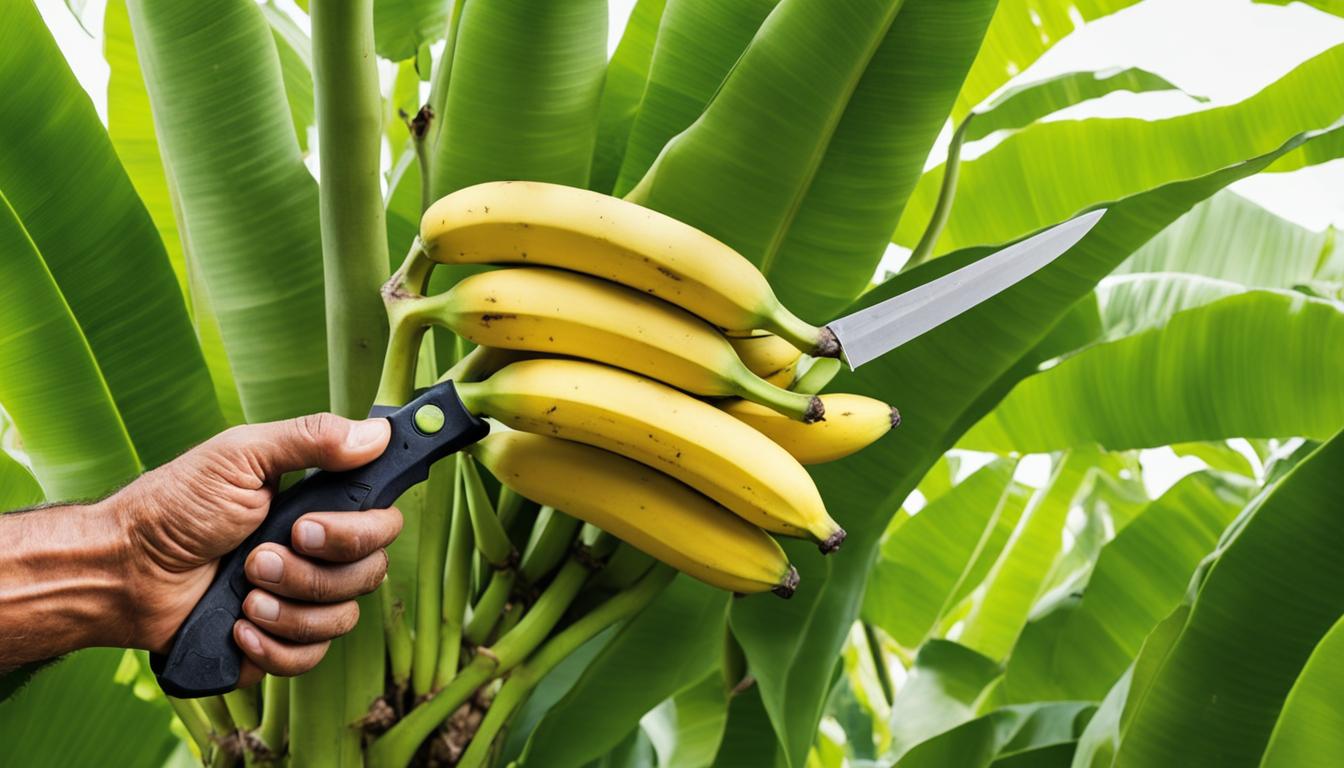In this section, we’ll take a closer look at the intricacies of harvesting baby bananas directly from the plant. Harvesting methods play a crucial role in ensuring a successful banana farming and cultivation process, resulting in a high-quality fruit production. Throughout this article, we will explore the different techniques employed during banana harvesting and the measures taken to maintain the freshness of the fruit until it reaches consumers. Let’s dive in and explore the fascinating world of growing baby bananas on banana plantations.
Understanding Banana Plantations and Cultivation
Table of Contents
In banana farming, the cultivation process is critical for producing high-quality fruits. Banana plantations are carefully managed to ensure optimal growth and fruit production. Proper soil preparation, planting techniques, and plant maintenance significantly influence the overall crop yield and quality.
The Role of Banana Plantations
Banana plantations are carefully planned and designed for optimal growth and fruit production. These plantations usually cover vast areas of land, providing a suitable environment for young banana plants to grow and mature.
Plantations are typically established in areas with warm climates and consistent rainfall to create ideal growing conditions for the plants. The plantation soil is carefully prepared with fertilizers and other organic matter to ensure healthy soil that is conducive to growth.
Practices Involved in Banana Cultivation
The cultivation of baby bananas involves several practices, including planting, pruning, and pest control measures to ensure that the plants grow healthily and produce high-quality fruits. Planting techniques vary depending on the region of the world, but most banana farmers take an organic approach to banana cultivation, avoiding the use of chemicals wherever possible.
The baby banana plants are cared for through regular watering, fertilization, pruning, and other nurturing activities that are essential to their overall health and growth. These plants take about nine months to mature fully, and proper care in the early stages is critical for optimal crop yield and quality.
“Growing baby bananas is an intricate process that requires sophisticated techniques and extensive knowledge in banana farming and cultivation”.
The successful cultivation of banana plantations necessitates precise attention to detail and knowledge of the growth processes for young banana plants. By implementing sustainable farming practices, such as crop rotation, avoiding pesticides, and using organic fertilizers, farmers can ensure that their plants thrive and produce high-quality fruit in abundance.
The Process of Harvesting Baby Bananas
Harvesting baby bananas is a delicate process that requires precision and expertise. One common method used is handpicking, where skilled workers manually remove the fruit from the plants. By selecting the fruit at its optimal ripeness, handpicking ensures that only top-quality baby bananas are harvested.
In addition to handpicking, other harvesting methods such as cutting or using machinery may be used in some banana farms, depending on factors such as the size of the plantation and the scale of the harvest. Timing is critical, and factors such as weather and the specific variety of the banana plant must be taken into account when deciding when to harvest.
The banana harvesting process can be labor-intensive, but it is essential for ensuring the production of high-quality fruit. Proper timing and careful consideration of various factors mean that the harvested fruit will be at its best, ready to be sent to the post-harvest handling phase for further processing.
Ensuring Quality Fruit Production
Producing high-quality baby bananas involves more than just harvesting them from the plant. The post-harvest handling techniques are crucial in maintaining their freshness and taste, ensuring they reach the market in the best possible condition.
Sorting the harvested baby bananas is the first step in maintaining their quality. Experienced farmers sort the bananas based on their size, shape, and color, ensuring that only the best ones are selected. This way, farmers can guarantee that the fruit is uniform, which makes it appear more appealing to consumers.
Washing the baby bananas is the next step in the process. Farmers use clean water to wash the fruit, removing any dirt, debris, or residue. After washing, the bananas are dried in preparation for packaging, ensuring that they remain fresh and dry during transportation and storage.
The final step in ensuring quality fruit production is packaging. Farmers use specialized packaging materials that prevent the fruit from undergoing any physical damage. The packaging materials also prevent the baby bananas from exposure to direct sunlight and other harmful environmental factors that can damage the fruit.
Sustainable farming practices are also essential in growing baby bananas and ensuring quality fruit production. Farmers should use organic fertilizers and practice crop rotation to avoid depleting the soil of essential nutrients. Using sustainable farming methods also helps preserve the environment, ensuring that future generations of farmers can continue cultivating and harvesting high-quality baby bananas.
In conclusion, growing baby bananas and ensuring quality fruit production requires attention to detail, experience, and a sustainable approach to farming. By following the post-harvest handling techniques and sustainable farming practices, farmers can produce high-quality baby bananas that satisfy the needs of consumers while preserving the environment for future generations.

